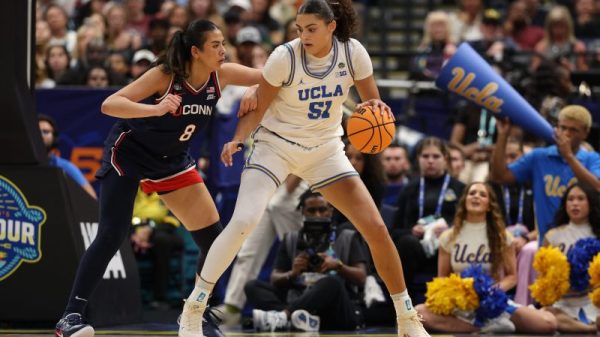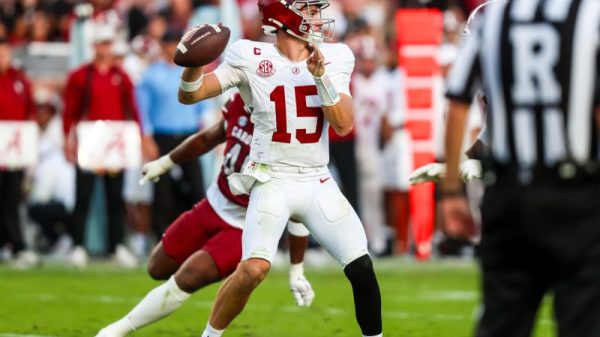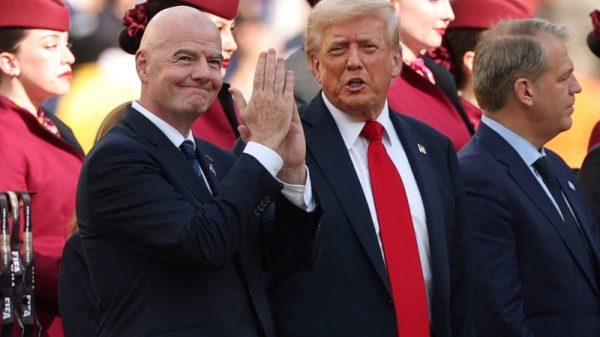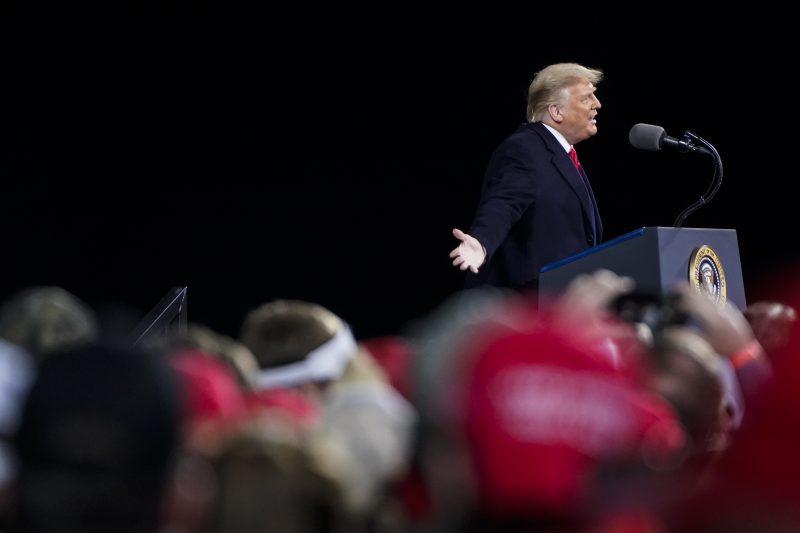When Donald Trump called Georgia Secretary of State Brad Raffensperger on Jan. 2, 2021, in a now-infamous bid to overturn the 2020 election, he alleged that thousands of dead people had voted in the state.
“So dead people voted, and I think the number is close to 5,000 people. And they went to obituaries. They went to all sorts of methods to come up with an accurate number, and a minimum is close to about 5,000 voters,” he said, without citing his study.
But a report commissioned by his own campaign dated one day prior told a different story: Researchers paid by Trump’s team had “high confidence” of only nine dead voters in Fulton County, defined as ballots that may have been cast by someone else in the name of a deceased person. They believed there was a “potential statewide exposure” of 23 such votes across the Peach State — or 4,977 fewer than the “minimum” Trump claimed.
In a separate failed bid to overturn the results in Nevada, Trump’s lawyers said in a court filing that 1,506 ballots were cast in the names of dead people and 42,284 voted twice. Trump lost the Silver State by about 33,000 votes.
The researchers paid by Trump’s team had “high confidence” that 12 ballots were cast in the names of deceased people in Clark County, Nev., and believed the “high end potential exposure” was 20 voters statewide — some 1,486 fewer than Trump’s lawyers said.
According to their research, the “low end potential exposure” of double voters was 45, while the “high end potential exposure” was 9,063. The judge tossed the Nevada case even as Trump continued to claim he won the state.
The “Project 2020” report conducted by the Berkeley Research Group has now been obtained by prosecutors investigating the Jan. 6, 2021, attack on the U.S. Capitol. A copy was reviewed by The Washington Post, and it shows that Trump’s own campaign paid more than $600,000 for research that undercut many of his most explosive claims. The research was never made public.
The Justice Department has sought and obtained multiple reports, emails and interviews from witnesses that show campaign officials analyzing, and often discrediting, claims that Trump was making publicly, according to several people involved in the investigation, who like some others spoke on the condition of anonymity to disclose internal details. The Berkeley report was provided to the Justice Department earlier this month, one of the people said, after some people involved in its crafting received a subpoena.
Another person who has received a subpoena said prosecutors have asked for all evidence that would disprove, or substantiate, fraud claims. This person said the questioning from the department was focused on exactly what Trump — and others around him — were told about the election not being stolen, and when, in the days leading up to the Jan. 6 riot at the Capitol.
The Berkeley report, which is written in technical jargon, was handled through an intermediary: It was commissioned by Kasowitz Benson Torres, a Trump-associated law firm, and conducted by East Bay Advisory, a subsidiary of the Berkeley Research Group, according to the copy reviewed by The Post. But the report, labeled “privileged and confidential,” states on its third page that the “client” was the campaign of Donald J. Trump For President. The draft obtained by The Post was labeled a “summary report” and dated Jan. 1.
A lawyer for Berkeley Research Group declined to comment on its report or interactions with law enforcement about the report. The Trump campaign did not respond to a request for comment, and a Justice Department spokesman declined to comment.
Despite Trump’s claims of rampant election fraud, most election officials around the country have maintained that such malfeasance is exceedingly rare. In the aftermath of the 2020 election, officials brought only a handful of fraud prosecutions. Even the conservative Heritage Foundation has found fewer than 1,500 instances of “proven voter fraud” — over a 40-year time frame.
Even the small number of potentially ineligible ballots that the Trump report claims were cast by dead people may be an overestimation. It is not uncommon for a small number of voters to cast ballots early or by mail and then die before Election Day. Those ballots are typically counted, and considered legally cast, because of the difficulty of tracking and retrieving the votes in such a short time frame.
The Berkeley report was an object of frustration to some of Trump’s advisers, who were looking for evidence of widespread fraud — and an object of validation for others, who wanted him to stop spreading lies about the election. A meeting between the Berkeley team, Trump and Trump’s team grew tense in December, people familiar with the meeting said.
The Berkeley report never explicitly says who won the election, but it goes through a series of allegations from Trump’s team and either disputes them or does not provide enough evidence to overturn the election.
Trump has repeatedly said there was no way he lost the 2020 election, saying there were illegal vote “dumps” after the election — and that election workers committed a range of misdeeds. He grew angry as mail-in ballots were counted in the days after the election, alleging fraud, urging states to stop counting ballots and railing against mail-in ballots.
But the researchers said there was no reason to believe the final vote totals in five key states were fraudulent. The team cites the expectation from the pandemic that more people would vote by mail — along with changed rules in many states. “This result was not unexpected,” the team writes.
“Our analysis of Pennsylvania, Georgia, Michigan, Wisconsin and Nevada concluded that in each state the final tabulated result was mathematically possible given absentee request rates,” the researchers wrote.
The researchers also sought to study whether there were periods of time that more absentee ballots flooded the system. “That is to say, to detect periods of high intensity absentee ballot application submissions over a short period of time,” the report says.
But the results were not helpful for Trump’s team. “There were 54 counties won by Trump (“Trump Counties”) and 13 counties won by Biden (“Biden Counties”). Accordingly, 162 burst periods were identified for Trump Counties and 39 identified for Biden Counties,” the report said.
Other tests were also performed. “Counsel instructed EBDA to investigate potentially anomalous distribution of birth dates in the Pennsylvania mail-in voting population,” the report says. “The rationale for this test was that if fictional voters had been artificially created during the voter registration process, that activity could create detectable discrepancies between characteristics of the 2020 voter population versus those found in the general population. In this case, dates of birth were the most quantitatively testable element of the voting population.” But the report did not substantiate anything that showed fraud to overturn the results in Pennsylvania.
The researchers also studied absentee ballot rates and said Trump might have won Georgia if absentee ballots were rejected at the same rate they were during the 2016 election — and if the ballots rejected were primarily Biden voters. But there was no reason to say those ballots should have been rejected, or that those precise ballots would have been the ones rejected.
In many cases, the team said they found small irregularities or anomalies, but they often said they could not determine whether fraud had actually occurred — or if there was a less nefarious explanation.
The firm studied a range of other baseless claims and theories, such as alleged ballot harvesting in nursing homes. They offered, for example, a list of about 50 nursing homes and adult-care facilities in Pennsylvania where there were at least 25 Democratic voters. But, the report concluded, the researchers could not prove there was anything necessarily fraudulent about that. Trump has claimed falsely that people in nursing homes voted illegally in Wisconsin, a claim the researchers did not appear to study.
Jacqueline Alemany and Amy Gardner contributed to this report.



























